Machu Picchu Weather
So you’re planning a trip to Machu Picchu or maybe even planning to complete the four day hike across the Inca Trail to Machu Picchu but don’t know what to wear, what to pack, or even when to travel. Nothing can be more variable than Machu Picchu weather or the Machu Picchu climate. Let us lay it all out for you.
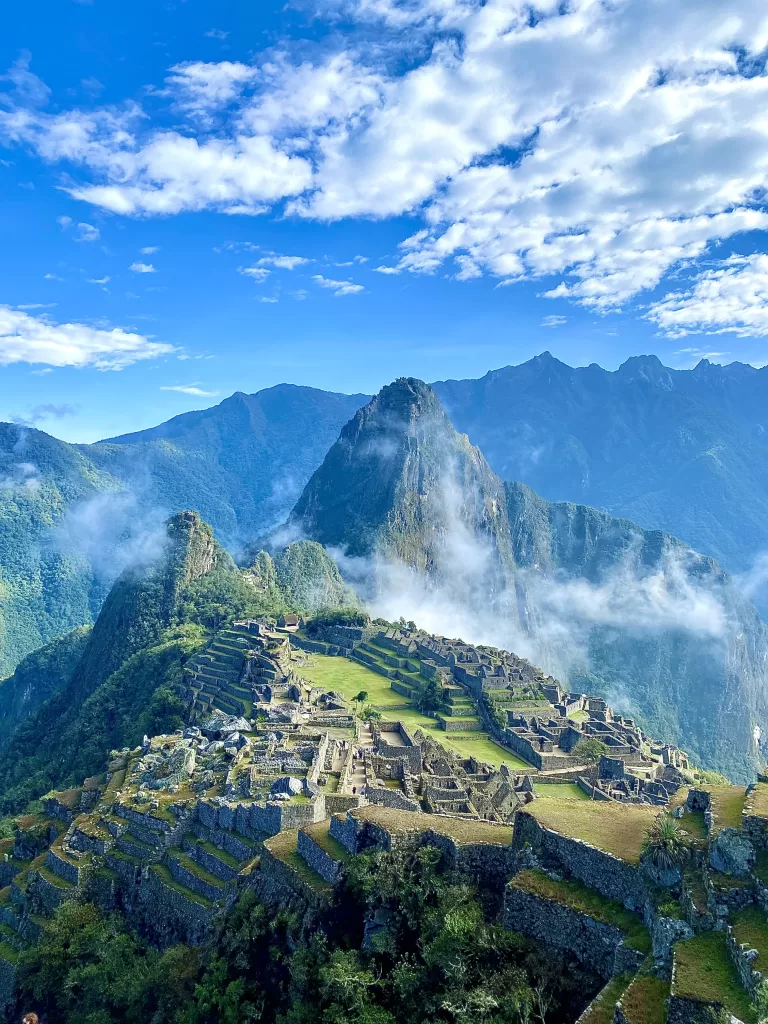

Machu Picchu Weather Cliff Notes
- Dry Season: May through October
- Wet Season: November through April
- Average Temperature: 60-70 degrees Fahrenheit (15.5-21 degrees Celsius)
- Colder at nights during Dry Season
- Peak Tourist Season: June to August
- UV Index: High
- Climate: Elevation requires additional precaution
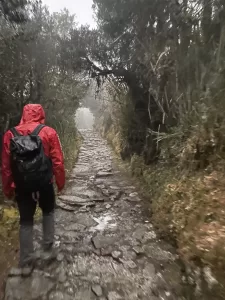

Dry vs. Wet Season
First and foremost, Machu Picchu (and most all of Peru) is subject to wet and dry seasons. Dry season typically runs from May to October and is characterized by clearer skies and less rainfall than the wet season. Temperatures stay between 60 and 70 degrees Fahrenheit during this time resulting in Machu Picchu’s peak tourist season; specifically June through August. Dry season also gives the benefit of better photo opportunities due to the clear open skies when trying to get the perfect view and image of Machu Picchu.
Wet season begins in November and usually runs through April. This period sees much higher rainfall and humidity, but also yields the green and lush landscapes that make Machu Picchu so beautiful. Machu Picchu’s wet season averages roughly 6 to 8 inches of rain per month – compared to just 2 to 4 inches of monthly rainfall during the dry season. Temperatures are similar to dry season; 60 to 70 degrees Fahrenheit, but the nights tend to stay a little warmer.


Altitude/Climate
Machu Picchu sits at approximately 7,970 feet – actually lower than the elevation in Cusco city (over 11,000ft) – but still at a very high elevation, nonetheless. As a result of the lower oxygen levels and atmospheric pressure at these elevations, it is important to acclimatize before any moderately strenuous activity, including hiking or walking around Machu Picchu. But what exactly is acclimatizing?
Acclimatizing
Acclimatizing is the process where your body builds up red blood cells, increases capillary density, and adjusts your blood pH in order to maximize and utilize the lower oxygen at such high elevations. Essentially, your body wants to make itself as efficient as possible at utilizing oxygen since the air is not as oxygen rich as it is at lower altitudes. Acclimatizing is a beautiful adaptation that our bodies are capable of making, but the unfortunate part is this takes up to two days to occur for most travelers visiting Cusco and Machu Picchu (unless of course you are coming from a similar elevation).
Altitude Sickness
If you don’t allow adequate timing or take the necessary precautions, it is common to develop altitude sickness. Altitude sickness is the combination of adverse effects that occur if you don’t acclimatize appropriately. In the unfortunate event that you experience altitude sickness, you can expect nausea/vomiting, headache, and dizziness/fatigue.
How do you treat or minimize altitude sickness? To minimize altitude sickness stay hydrated, avoid alcohol consumption, and strenuous activities for the first two to three days when arriving at higher elevations. You can also request a prescription from your doctor for acetazolamide to help in the acclimatizing process to prevent altitude sickness. Over 80% of the people that we hiked the Inca Trail with were prescribed and were taking acetazolamide. We personally had the medication packed but opted not to take it unless necessary.
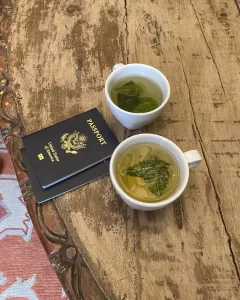

Coca Tea
Of note, locals in Peru feel strongly that coca tea (tea derived from coca leaves) is a great treatment and prevention for altitude sickness. Upon arriving at our hotel, Aranwa Boutique Hotel in Cusco [Click Here for link to Hotel], the first thing they offered us was coca tea for this purpose. We drank more than our fair share and fortunately at no point experienced altitude sickness other than mild fatigue. However, this fatigue could have been rationalized as the result of long distance travel or inadequate sleep. Based on our experience, we highly recommend coca tea for the potential benefits, but Peru is also one of the few places that it is legal/offered, so embrace the culture and have a cup or two.
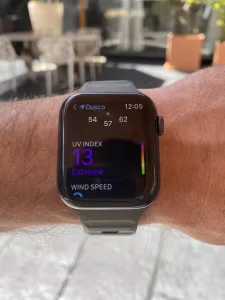

UV Index
The higher altitude, in addition to the close proximity to the equator means that the UV radiation levels can be very high at Machu Picchu. We didn’t closely monitor the UV index throughout the Inca Trail hike nor the day we entered Machu Picchu due to minimal phone connectivity. We did, however, keep an eye on it while in Cusco. Prior to visiting Peru, we were always under the assumption that peak UV index was 10 or maybe 11. But to our surprise, at brunch one morning we felt as if the sun was surprisingly hot for such an early morning and low temperature. I looked at my watch only to see it register as a UV index of 13. UV indexes at that high of a level are very noticeable and a quick reminder of the importance of protection. Therefore, it is essential to utilize sunscreen, wear sunglasses, and a wide brimmed hat to protect yourself from sunburn and UV exposure, especially during the dry season when the sky is clearer. Of note, however, it is not necessary to pack all of these items because Cusco city is filled with shops and vendors that tailor to the sun-based needs of tourist. Cusco even has popular brands such as Patagonia, The North Face, and Mountain Hardware.
Fun Fact: the highest UV index ever recorded was in the Andes Mountains, which is the mountain range that includes Machu Picchu.
Machu Picchu, Peru is a destination with a highly variable weather pattern due to its climate. Temperatures are relatively consistent year round, but can feel much cooler in the dry season as the day turns to night. As expected, the dry season is also the peak travel season for visitors to Machu Picchu and therefore should be avoided if you desire to minimize crowds.
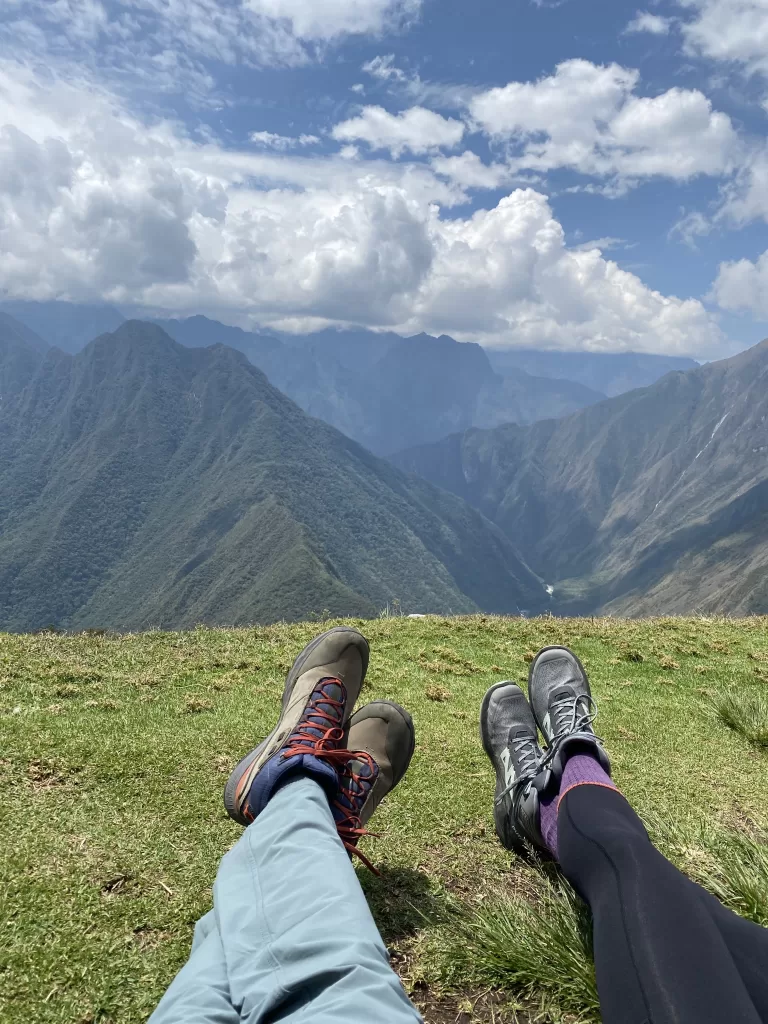

What to Pack
So what should you pack and plan to wear when visiting Machu Picchu? Whether you are hiking the Inca Trail to get to Machu Picchu or simply visiting by train, the clothing suggestions are similar. The most crucial strategy is to pack and plan in layers: a UPF long-sleeved base layer, a breathable quarter zip, and a lightweight puffer should be all you need for your core. Any type of comfortable lightweight pants and shoes should be perfect for your legs and feet. I went with the Patagonia Quandry pants and loved them. They offer multiple colors and fits (long vs short) to meet the needs of every hiker/visitor. Whether you are planning to hike or make a day trip affects whether you would need high top hiking boots or whether low top shoes would be appropriate. Finally do not forget a head covering of some sort. If you, as many Machu Picchu visitors, are starting in Cusco, you will have plenty of options to choose from when selecting your hats. Last but not least, pack a rain layer. We packed rain pants as well as a rain jacket, but at no point felt the need to wear the pants. With lightweight and breathable hiking pants, they will only absorb so much water and will quickly dry out. We hope this helps as you plan for the often variable Machu Picchu weather!
